To comply with my non-disclosure agreement, I have changed some of the quantitative data and omitted some information in this case study.
Impact Areas
-
Achieved a Higher Account Activation Rate
-
Improved User Task Success
-
Increased Developer Confidence with Intuitive Sandbox envirnoment
-
Increased API Revenue Growth
My Role - Edit needed
-
Heuristic analysis
-
User Research
-
Wire-framing
-
Hi-fidelity wireframes
-
User testing
My Team
-
Myself - Lead Product Designer
-
Intern - UI/UX Designer
-
Vaibhav - Senior Product Manager
-
3 Engineers - Front End & Back End
Overview
Gridlines is a instant verification APIs that helps businesses simplify customer onboarding and automate fraud risk monitoring. It allows businesses to verify information about individuals, businesses, and assets. Gridlines offers a variety of APIs that can be used to verify employment, income, vaccination status, and more based on various use-cases and inline monitor their usage of APIs.
Problem
Onboarding new customers can be a cumbersome process, often requiring manual verification of identity and customer information. This creates bottlenecks for early-stage startups with limited resources and inefficiencies for large enterprises managing high volumes of onboarding requests. Traditional verification methods further expose businesses to fraud attempts.

Solution
A user-centric API console prioritising ease of use, self-service capabilities, and real-time verification functionality.
Core Design features for Gridlines Efficiency
API Selection for Use Cases
A centralized library showcasing all the available instant verification APIs, This library allows users to easily search, filter, and compare APIs based on their specific verification needs.
Seamless Workflow (Key Creation)
A clear process for account creation, followed by intuitive steps for choosing APIs and generating API keys. These keys securely grant access to the chosen APIs for integration.
Sandbox Testing Environment
Users can test and refine API integrations risk-free within the console before launch.
API Performance Dashboard
Monitor API usage patterns and performance metrics, allowing for data-driven decision making.
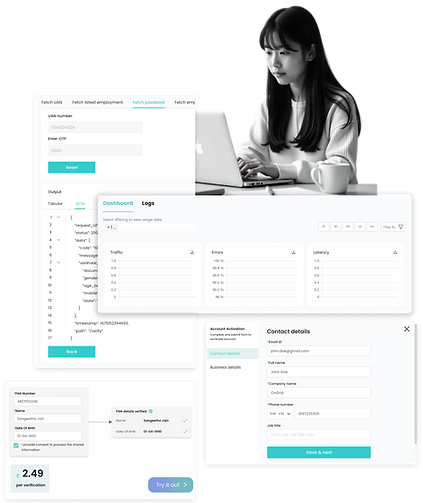
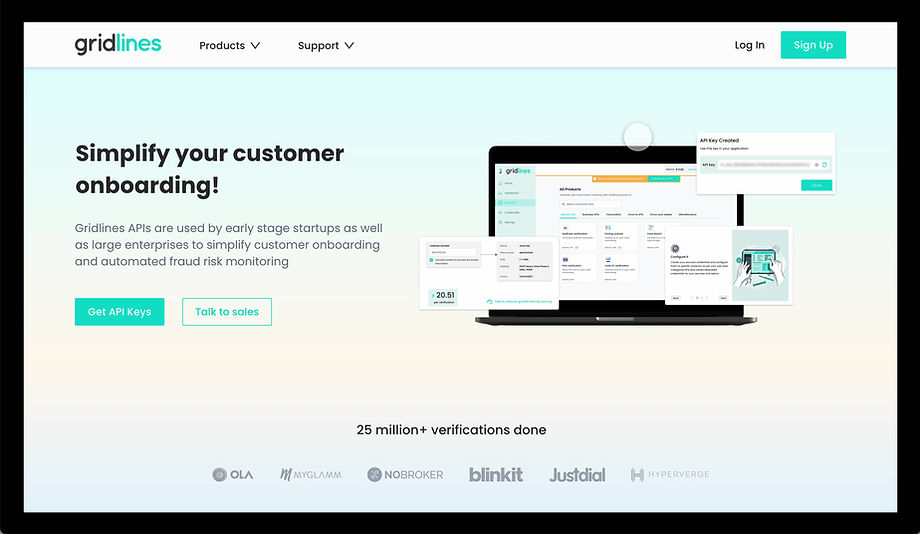
Research
Identifying Primary users
Gridlines API serves various users in the customer onboarding process, including technical teams for integration, business stakeholders for oversight, risk management for fraud prevention, and operational teams for direct onboarding.
Developers/Integration Specialists
Responsible for integrating Gridlines APIs into the company's onboarding app
Business Analysts/Product Managers
Responsible for overseeing the overall customer onboarding process and its impact on business goals.
Risk Management Teams
Focused on mitigating fraud risks during customer onboarding.
Onboarding Specialists
Responsible for integrating Gridlines APIs into the company's onboarding app

Market Research
Evaluating Existing Solutions
Conducted a thorough market research analysis. This was crucial to understand the existing API console landscape.
I focused on prominent API console platforms like Google Console, Stripe, and Setu. Using the established heuristics as a framework, I compared these platforms across various usability criteria. This allowed me to gain valuable insights into Design patterns, Task flows, Opportunities for innovation, and pros and cons.



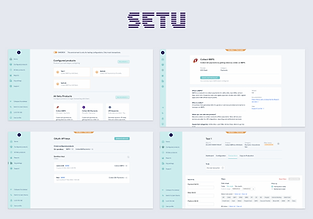
Information Architecture
Based on the insights gained from the initial market research, competitor analyses and product requirements for the MVP, I defined the sitemap for Gridlines and then evaluated it. The site map helped in identifying primary focuses -
-
Public pages
-
Onboarding
-
Account activation
-
Dashboard management
-
CRUD operations on API keys

Task flows
Creating task flows, helped in analysing to keep focus on one user, their goal, and how they would carry out the task in order to achieve it. This in order helped in assessing the following attributes -
-
The overall number of steps taken to onboard and create a key
-
The frequency of tasks, possible scenarios for nudging to account activation
-
The cognitive complexity of the the flow, by providing minimum mental operations involved in completion of task
-
The time taken to navigate, onboard and perform CRUD operations
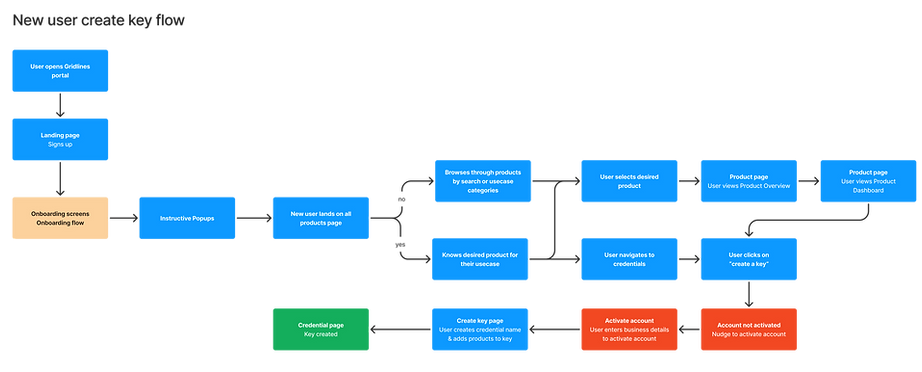

Design
Onboarding
Designed the onboarding experience to be short and crisp and not let the user get overwhelmed the experience. This was done by providing explicit messaging and instructive guides

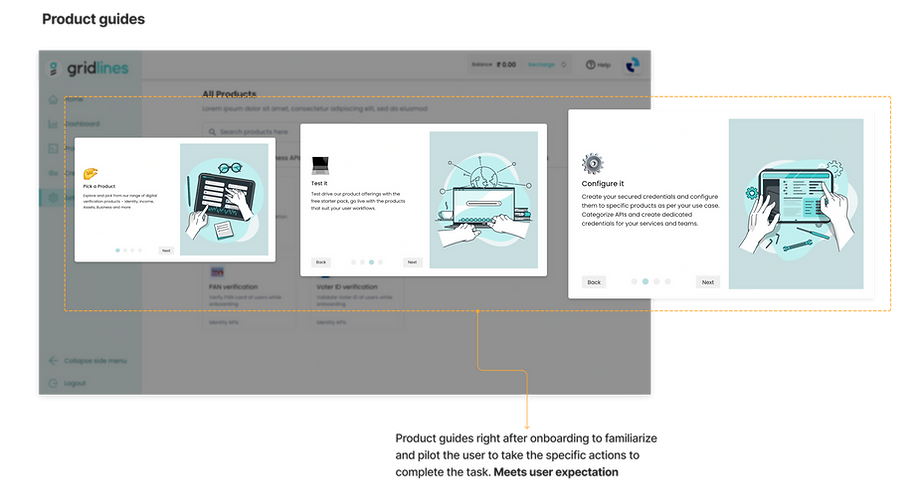
Designed for Clarity
I designed the product page and other key sections of the Gridlines console with a focus on intuitive user flows and subtle, ethical nudges. The goal was to make every interaction simple and straightforward, guiding users effortlessly through the platform. From clean layouts to helpful prompts, every detail was crafted to reduce friction and ensure the experience felt natural. This approach not only made the interface more approachable but also encouraged higher adoption by empowering users to explore and utilize APIs with confidence.
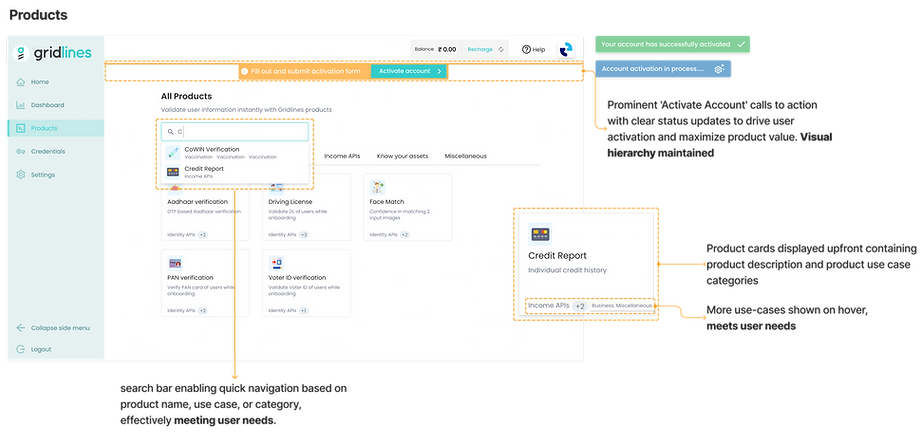
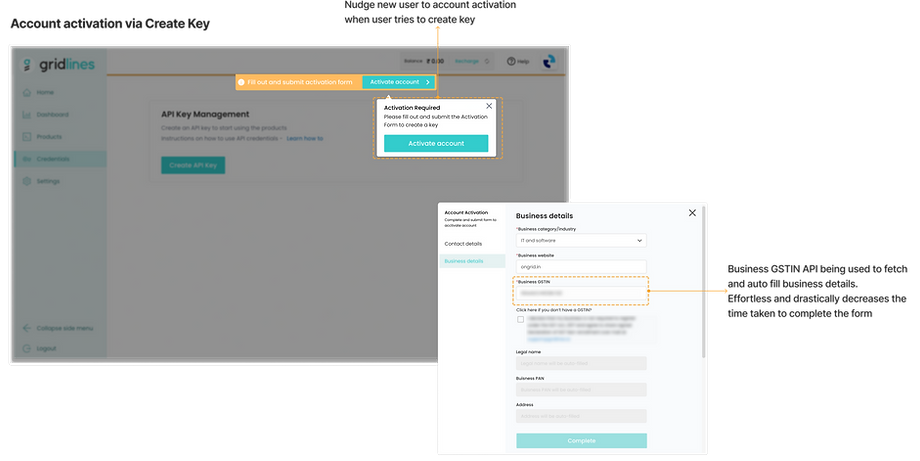
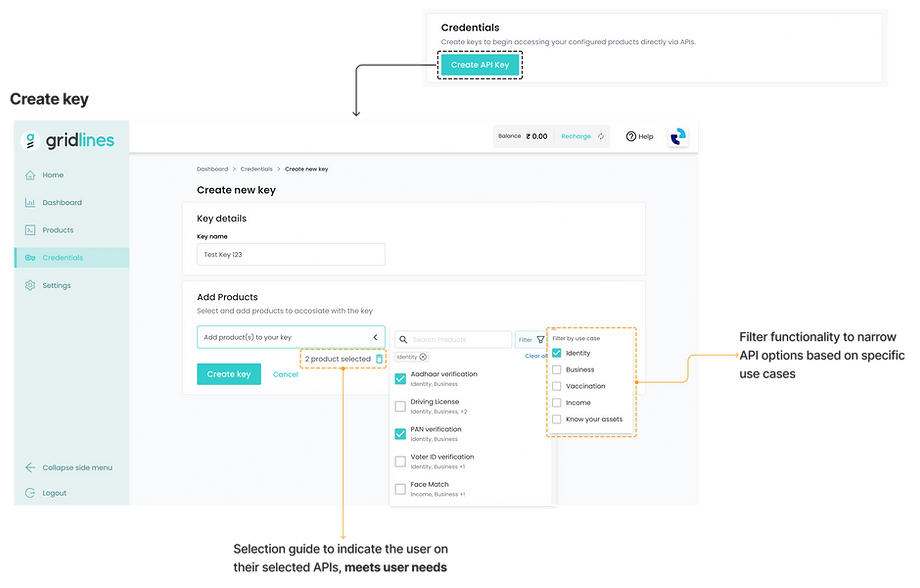
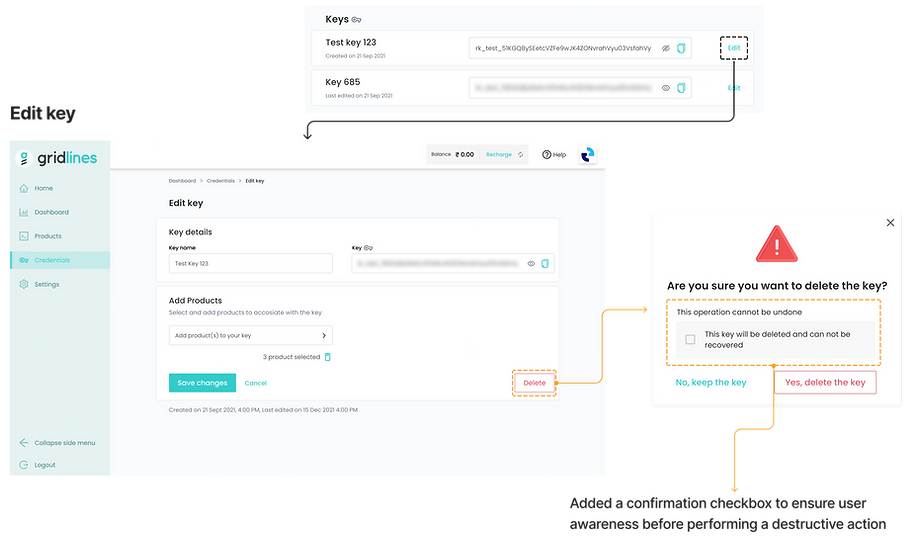
Design System
To give Gridlines a modern, efficient feel, I built a design system that was all about clarity. I started by hand-picking icons, colours, and typography that felt intuitive and on-brand. Then, leveraging the power of Ant Design's React UI library, I created an accompanying component library. Think interactive buttons, streamlined forms, and consistent elements across the board. This wasn't just about aesthetics; it was about empowering the development team to rapidly iterate, build new features, and deliver a consistently excellent user experience. Basically, I wanted to make building Gridlines as smooth as using it.


Key Learnings and Takeaways
Every project is a masterclass, and Gridlines was no exception. Here’s what I learned while designing a robust API console for developers and managers.
-
User Empathy: Understanding a developer's workflow, pain points, and technical needs was crucial. I constantly asked, "How can we make this as seamless and efficient as possible?" This mindset shaped intuitive flows, clear documentation, and a frictionless user experience.
-
Rapid Iteration Fuels Adoption: The design process was highly iterative—testing, gathering feedback, and refining constantly. This ensured that every element, from API selection to usage monitoring, was optimized for ease of use and adoption.
-
Clarity & Simplicity Reduce Complexity: Intuitive navigation, and a streamlined interface. This made it easier for developers to understand and implement Gridlines’ powerful verification APIs.
-
Sandbox Environments Build Confidence: Providing a robust sandbox environment gave developers a safe space to experiment, test, and troubleshoot. This not only accelerated the integration process but also fostered trust and increased API adoption.

